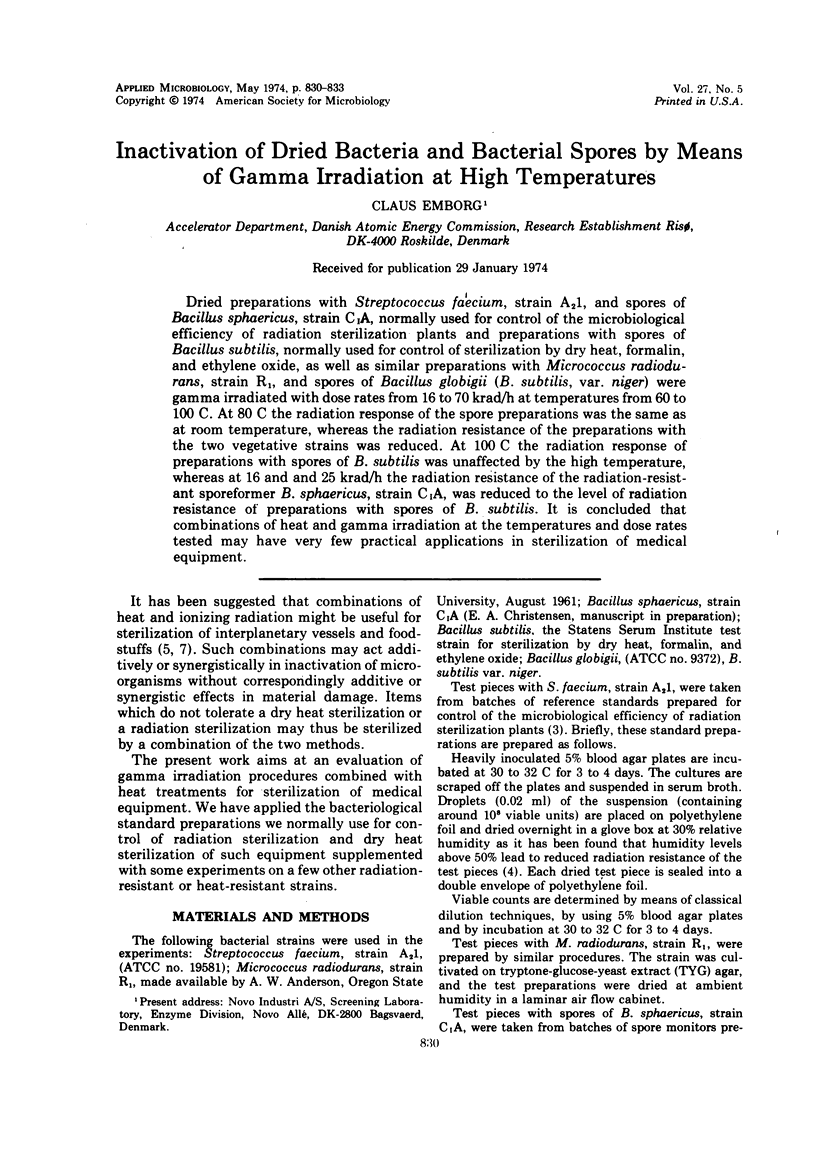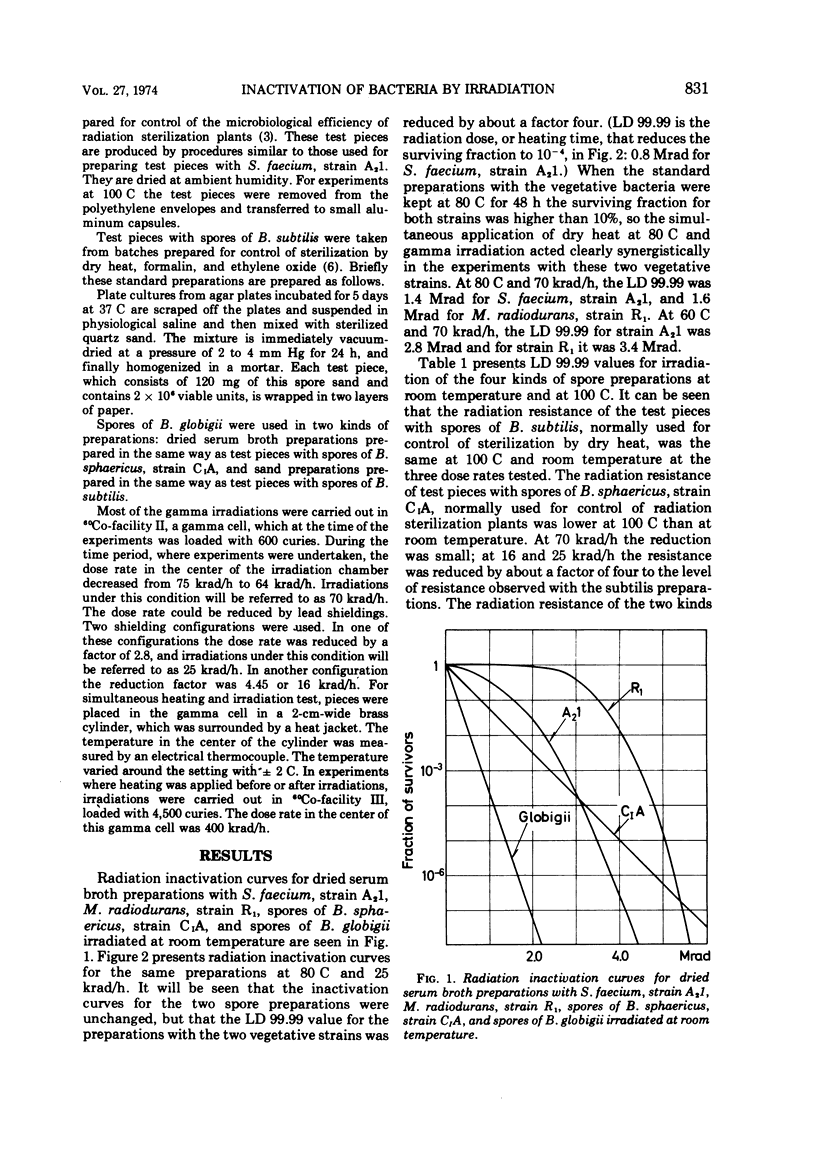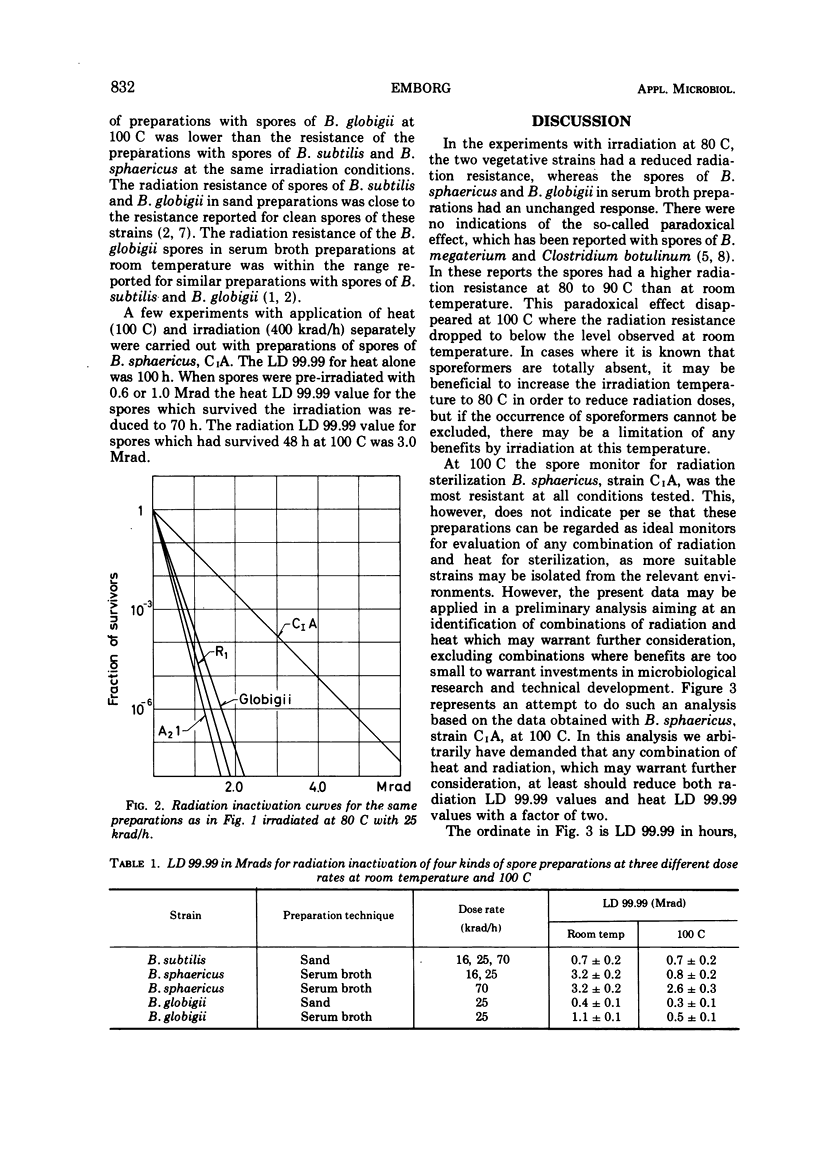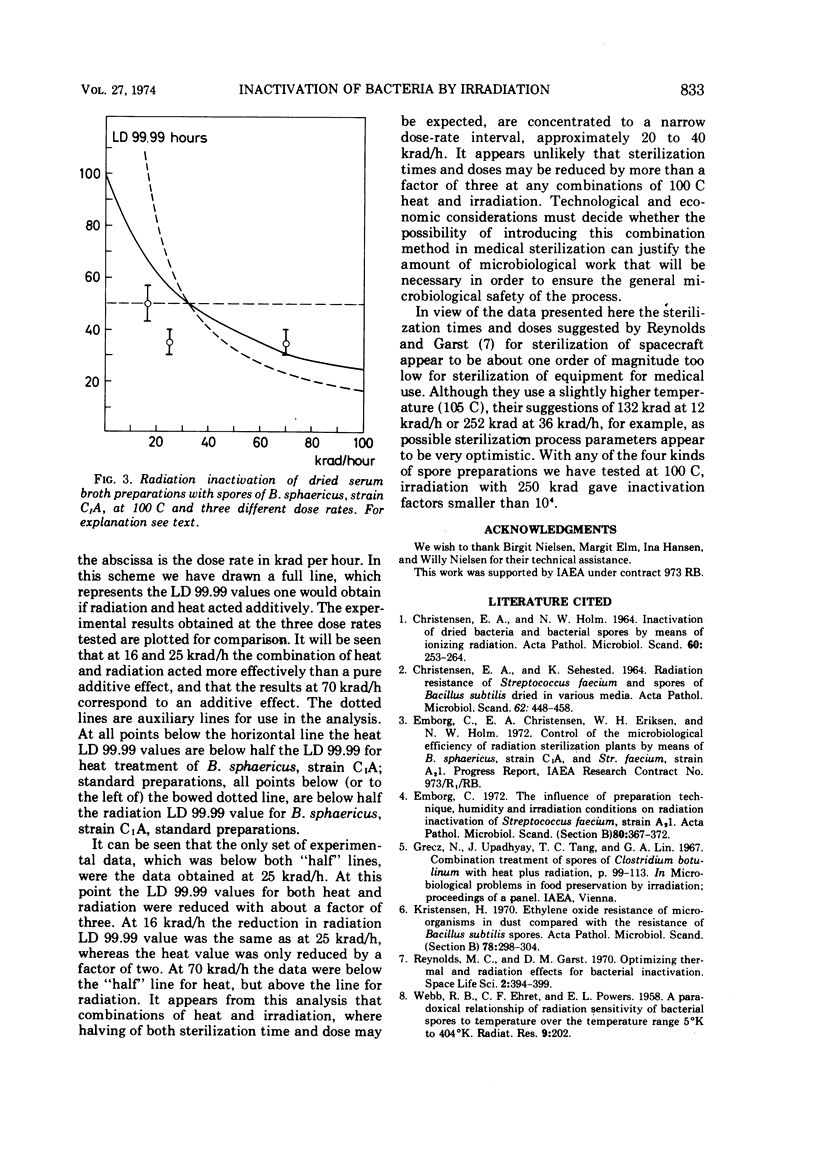Abstract
Dried preparations with Streptococcus faecium, strain A21, and spores of Bacillus sphaericus, strain CIA, normally used for control of the microbiological efficiency of radiation sterilization plants and preparations with spores of Bacillus subtilis, normally used for control of sterilization by dry heat, formalin, and ethylene oxide, as well as similar preparations with Micrococcus radiodurans, strain R1, and spores of Bacillus globigii (B. subtilis, var. niger) were gamma irradiated with dose rates from 16 to 70 krad/h at temperatures from 60 to 100 C. At 80 C the radiation response of the spore preparations was the same as at room temperature, whereas the radiation resistance of the preparations with the two vegetative strains was reduced. At 100 C the radiation response of preparations with spores of B. subtilis was unaffected by the high temperature, whereas at 16 and and 25 krad/h the radiation resistance of the radiation-resistant sporeformer B. sphaericus, strain CIA, was reduced to the level of radiation resistance of preparations with spores of B. subtilis. It is concluded that combinations of heat and gamma irradiation at the temperatures and dose rates tested may have very few practical applications in sterilization of medical equipment.
Full text
PDF



Selected References
These references are in PubMed. This may not be the complete list of references from this article.
- CHRISTENSEN E. A., HOLM N. W. INACTIVATION OF DRIED BACTERIA AND BACTERIAL SPORES BY MEANS OF IONIZING RADIATION. Acta Pathol Microbiol Scand. 1964;60:253–264. doi: 10.1111/apm.1964.60.2.253. [DOI] [PubMed] [Google Scholar]
- CHRISTENSEN E. A., SEHESTED K. RADIATION RESISTANCE OF STREPTOCOCCUS FAECIUM AND SPORES OF BACILLUS SUBTILIS DRIED IN VARIOUS MEDIA. Acta Pathol Microbiol Scand. 1964;62:448–458. doi: 10.1111/apm.1964.62.3.448. [DOI] [PubMed] [Google Scholar]
- Emborg C. The influence of preparation technique, humidity and irradiation conditions on radiation inactivation of Streptococcos faecium, strain A 2 1. Acta Pathol Microbiol Scand B Microbiol Immunol. 1972;80(3):367–372. doi: 10.1111/j.1699-0463.1972.tb00048.x. [DOI] [PubMed] [Google Scholar]
- Kristensen H. Ethylene oxide resistance of micro-organisms in dust compared with the resistance of Bacillus subtilis spores. Acta Pathol Microbiol Scand B Microbiol Immunol. 1970;78(3):298–304. doi: 10.1111/j.1699-0463.1970.tb04306.x. [DOI] [PubMed] [Google Scholar]
- Reynolds M. C., Garst D. M. Optimizing thermal and radiation effects for bacterial inactivation. Space Life Sci. 1970 Dec;2(3):394–399. doi: 10.1007/BF00929295. [DOI] [PubMed] [Google Scholar]


